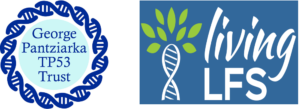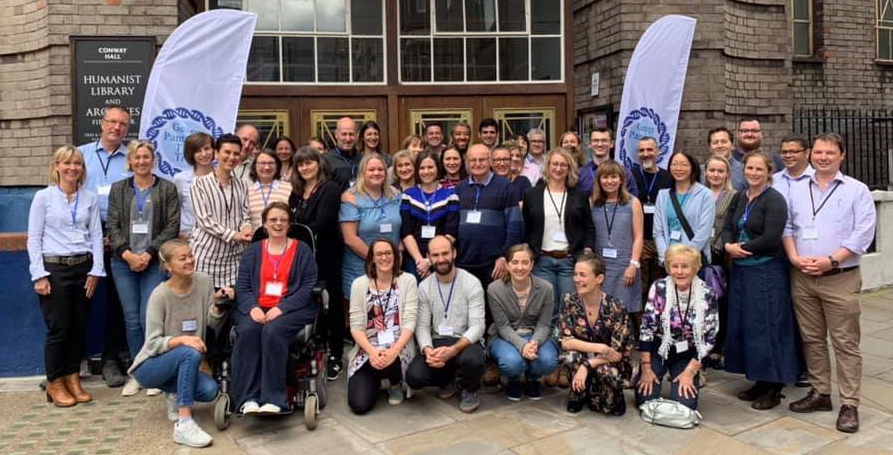#WearBlueForLFS – LFS Awareness Day March 20th
What is LFS?
LFS stands for Li Fraumeni Syndrome, named after two doctors who noticed that some families were prone to developing rare cancers – particularly in childhood and early adults. These families didn’t just have one or two members getting sarcomas and other rare cancers, but it occurred again and again and in different generations. Bad luck? In the end it was discovered that this was caused by a mutation in a gene called TP53.
What is TP53?
It’s TP53 that stops most people getting cancer in the first place. The TP53 gene is the most important tumour suppressor gene in the body (and not just in humans!). It produces a protein called p53 and this can nip cancer in the bud when a cell gets hit by DNA damage. It’s also the most commonly mutated gene in cancer – but for most cancer patients it only gets mutated in their cancer cells. For people with LFS it’s mutated in all their cells from the moment they are born.
What’s this got to do with wearing blue?
Blue is a colour associated with nature, health, resilience and serenity. All good things that we need more of. It also happens to be the primary colour used for logos and other material by the George Pantziarka TP53 Trust (UK LFS organisation) and Living LFS (US LFS organisation). So join us in solidarity and wear anything blue on Sunday 20th March to have some fun whilst raising awareness about this rare disease. Post a photo/selfie on social media and hashtag #WearBlueForLFS. Our Instagram is @georgetp53. Watch this space!

How do you get LFS?
LFS in a genetic condition – which is why it runs in families. A parent with LFS has a 50% chance of passing it on to a child – and it’s a dominant gene which means that inheriting a mutated TP53 gene from just one parent is enough to get LFS. So most people with LFS get it from their parents, but there are also many who develop LFS in the embryo. These people are born with LFS even if neither parent is affected – and then they can pass it on to their own children.
What are the risks?
High! For women the life-time risk of having cancer is about 90%, for men it’s about 70%. There’s a 50% chance of getting another cancer after the first. Childhood cancer is particularly frequent, and in women early onset breast cancer is one of the biggest risks. Cancers associated with LFS include rare bone and soft tissue sarcomas, childhood brain tumours and leukaemias, but also more common cancers such as breast cancer.
Can it be treated?
There is no treatment for LFS as such. For women there is risk-reducing mastectomy to guard against breast cancer. Other than that it is very important for people with LFS to have regular health screens and imaging – things like whole-body MRI scans and check-ups with specialists to catch any new cancers as early as possible. Research shows that for people with LFS catching cancer early improves survival. Currently there is an agreed protocol for such screening in the UK and other countries, but it’s expensive and many people are not getting the care they need. We need to change this!
How much research is there?
Not enough! It’s a rare condition so research is patchy. We cannot accurately answer questions such as ‘how many people are diagnosed with LFS in the UK?’ or ‘how many undiagnosed cases of LFS are there?’. We need a central database where we can record information across the country to answer such questions. We need to understand more about how cancer risk varies depending on the type of TP53 mutation (there are lots!). And we need to run clinical trials to find ways of reducing the cancer risk for people with LFS – with drugs and life-style changes.
And this is what we look like…

